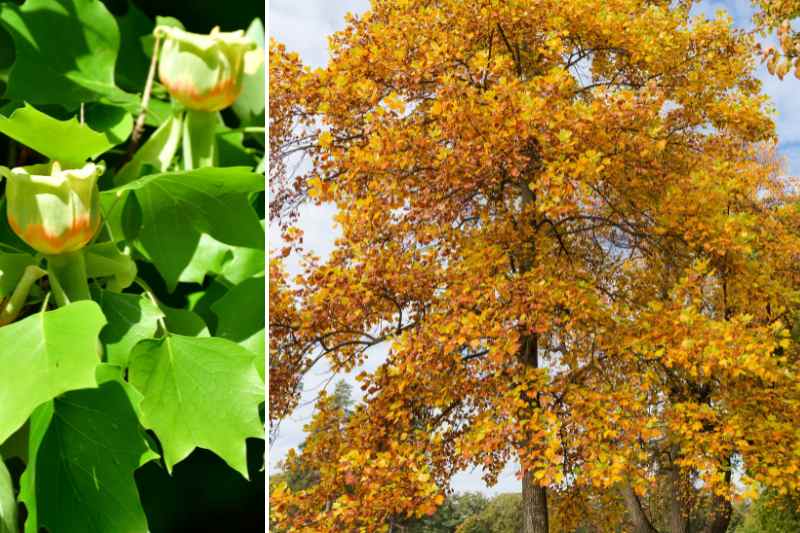Spectacular flowering, flamboyant foliage, majestic habit... The Tulip tree (Liriodendron tulipifera) is a true botanical gem that draws every eye. This tree native to North America is notable for its tulip-shaped flowers in a vibrant orange-yellow and its deciduous, pale green leaves that take on golden tones in autumn. A real asset for any garden, it can reach 20–30 metres and bring an exotic touch to outdoor spaces. But should you prune this handsome tree? If so, when, how and why? Everything is explained in our how-to sheet.

Why pruning a Tulip tree?
First and foremost, dead or diseased branches should be removed to maintain tree health. Weakened or infected branches can act as vectors for various diseases or parasitic organisms.
Improving tree structure is another fundamental reason for pruning. A well-pruned Tulip tree has a balanced, attractive form, and good structure also helps distribute branch weight evenly, reducing risk of breakage from snow, wind or the branches' own weight as they grow. This is especially important when the tree is still young (under 10 years).
Pruning can stimulate healthy growth by opening up the crown and increasing light penetration through the foliage, known as crown thinning. This improves photosynthesis, essential for vigour and vitality.
Important! : In all cases, prune lightly an Tulip tree, which in any case has relatively slow growth. These trees do not tolerate excessive, drastic pruning well. Moreover, some cultivars with particular habit require no pruning at all: for example Tulip tree 'Fastigiata' with its fastigiate habit or Liriodendron 'Edward Gursztyn' with very compact development. In short, only prune when necessary, for a broken, weak or badly placed branch.
When to prune a Tulip tree?
Prune Tulip tree in late winter or early spring (March–April), just before resumption of vegetative growth; this optimises wound closure and minimises sap loss. Scheduling pruning at this time limits additional stress and promotes a vigorous restart for the season ahead.
Generally, for mature trees, a light prune every 5–10 years is sufficient to maintain shape and health. Young trees benefit from more frequent pruning, ideally once a year or every two years, to establish good branch structure.
Key points for pruning a Liriodendron tulipifera
Pruning a Tulip tree begins with a careful inspection to identify and remove dead, diseased or damaged branches, preventing disease spread and encouraging healthy growth. This step also includes removing crossing branches or those that rub together, which is essential to avoid wounds to the tree.
Next, you may improve structure by removing a few branches that cause imbalance, helping to maintain an aesthetic and functional form. You can also, here and there, remove certain branches to increase air circulation and light penetration, both crucial for good flowering.
Finally, formative pruning is applied to young trees to establish a solid basic structure, choosing a central trunk and organising lateral branches strategically to ensure balanced, harmonious development from the start.

How to prune a branch?
For large branches
If branch is thick, work in three stages to avoid tearing the bark:
- First cut (from beneath) :
- About 20–30 cm from trunk, make a cut one-third through branch thickness. This prevents bark from tearing when you cut branch off.
- Second cut (from above) :
- Make a cut a few centimetres further out (towards branch tip) until branch falls away.
- Final cut :
- Make a clean cut just above the collar, without damaging it.
For small branches
- Use a sharp pruning shear to avoid crushing branch.
- Make a clean, angled cut (about 45°), just above an outward-facing bud. This encourages balanced growth.
Final tips
Remember to disinfect cutting tools before moving from one tree to another to prevent transmission of diseases.
Never remove more than 20% of foliage from a Tulip tree during a single pruning session (which certainly should not be annual!) so as not to compromise tree health.
And of course, avoid pruning during periods of drought or when tree is under water stress.
If tree is very large and you do not feel comfortable, call a professional arborist.
Necessary equipment
- A clean, well-sharpened pruning shear for small branches
- A pruning saw for thicker branches
- Disinfectant to clean tools between cuts
































Comments